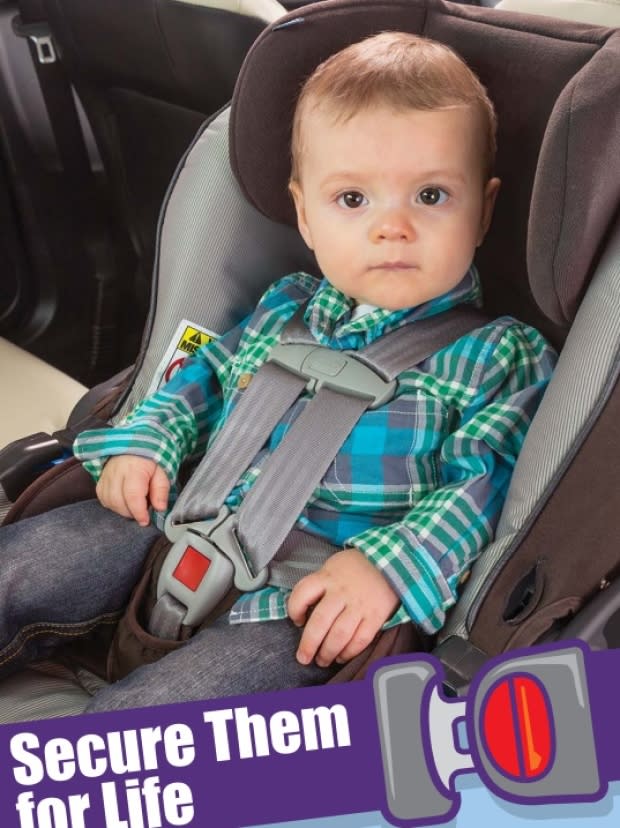New rules for driving with children on board come into effect Thursday
Children under the age of nine, or under four feet nine inches in height, are required by law to be in booster seats, as of Thursday.
Drivers who fail to comply with this amendment to the Quebec Highway code could face a fine of $80 to $100 and three demerit points, according to Quebec's automobile insurance board (SAAQ).
Under the old rules, children could come out of their booster seats once their height, seated in the booster, was 63 centimetres, or just over two feet.
Children younger than nine can come out of booster seats if they are taller than 145 centimetres — or 4-9 — when standing.
Injury prevention
SAAQ spokesperson Mario Vaillancourt said the new rules will help prevent serious injuries.
The change to the Highway Safety Code was first put forward in a bill in late 2017.
Every year, more than 1,000 children under the age of nine are victims of road accidents, and child seats can reduce the risk of serious injury or death by up to 70 per cent.
The SAAQ recommends that children under the age of 12 ride in the back seat of a vehicle, but that guideline isn't mandatory.
Certified child passenger safety instructor Marie-Pier Carpentier said the main thing to understand about the new rules is that the seatbelt must fall across the hips, not the stomach, and over the shoulder — not the neck.
The SAAQ describes the three kinds of seats that parents must invest in:
Newborns and babies who weigh less than 10 kilograms must be in a rear-facing infant seat, installed according to the seat manufacturer's instructions.
A child can be switched to a front-facing seat, properly installed, once he or she is at least one year old and weighs more than 10 kilograms (22 pounds.) Because of the extra protection offered by the harness, children should remain in a front-facing child seat until they hit the weight or height limits indicated by the seat's manufacturer.
Children may use a booster seat once they are 18 kilograms, or 40 pounds, and must remain in the booster seat, properly belted, until they meet the new parameters set by the SAAQ.
The SAAQ recommends parents make an appointment with one of its child safety seat inspectors, at childcarseat.qc.ca, to ensure the seat meets regulations and is properly installed.
Tips from the SAAQ:
Seat must have the Transport Canada compliance label. It is illegal to have one from another country, because standards are not the same.
Complete and send the registration card to the manufacturer in case there is a recall.
Respect the seat's expiration date. Materials lose resistance over time.
Always replace the seat after an accident, even if the child was not in the seat.
Using a second-hand seat is strongly discouraged; reselling or lending a car seat made before 2012 is not authorized by Health Canada.



